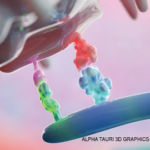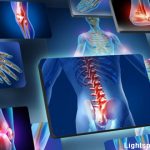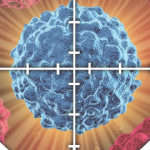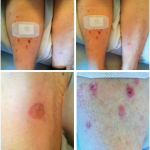For the study, Drs. Albayda and Cappelli identified patients they had seen with ICI-related arthritis who also had ultrasound imaging as part of their work-up. They conducted a retrospective chart review to obtain demographics, oncologic history, clinical presentation, imaging and synovial fluid results.
Dr. Cappelli says, “In this case series, we were able to quickly identify patients who were having these symptoms. ICI-induced inflammatory arthritis is an unusual disease that does not act like rheumatoid arthritis [RA] or any other primary autoimmune diseases, and many questions remain unanswered. We determined that the most common finding was active synovitis, followed by inflammatory tendon involvement. Early erosions also hint at the aggressiveness of this disease.”
This work, supported by the National Institutes of Arthritis and Musculoskeletal and Skin Diseases and the Jerome L. Greene Foundation, involved nine patients with a total of 18 joint regions assessed. The knees were the most commonly imaged joint followed by the hands, wrists, feet and ankles. Synovitis was seen in 12 of the 18 joints, and tendon involvement was seen in 13 of the18 joints.
Don’t Address the Heart & Gut Alone
Dr. Albayda says, “If there is a painful joint involved, then it’s important to do further imaging to determine what structures are involved. Ultrasound is inexpensive, and most rheumatologists have routine access to this imaging. Taking the time to do these assessments is important because there is still so much we don’t know about this disease. Sometimes, the imaging may help point a subset of the disease. In the future, we may find that if there is additional tissue or synovial proliferation that looks like standard RA, then using treatments that target this [condition] may be more helpful. Some tendon and bone abnormalities mimic spondyloarthritis, and if this is the primary finding, then targeting these pathways may be beneficial.”
Indeed, says Dr. Cappelli, multiple studies indicate that joint pain is one of the more common reactions to immune checkpoint inhibitors. She says, “There have been a couple of [factors] that have impeded the study of ICI-induced inflammatory arthritis. One was that the incidence of arthritis was not well captured in the original clinical trials. The other is that this type of arthritis can be a later development as compared with other side effects.”
For this disease, good collaboration is vital. “If a patient has joint pain and swelling that emerges after the initiation of ICI therapy, then schedule an appointment immediately with a rheumatologist. Rheumatologists can augment oncological treatment by helping to determine whether symptoms are ICI-induced inflammatory arthritis, an alternate cause of joint pain or the progression of cancer. Making things more complex is that, even after someone has completed treatment and has been declared cancer-free, they can still get ICI-induced inflammatory arthritis. While screening for more serious drug-associated problems that affect the heart and gut, don’t forget about the joints,” Dr. Cappelli says.



